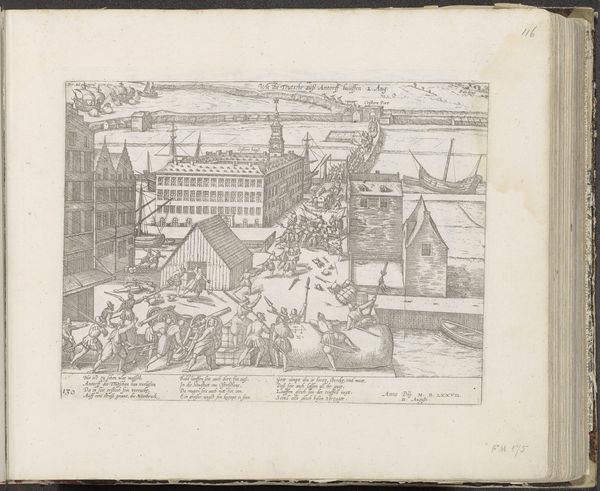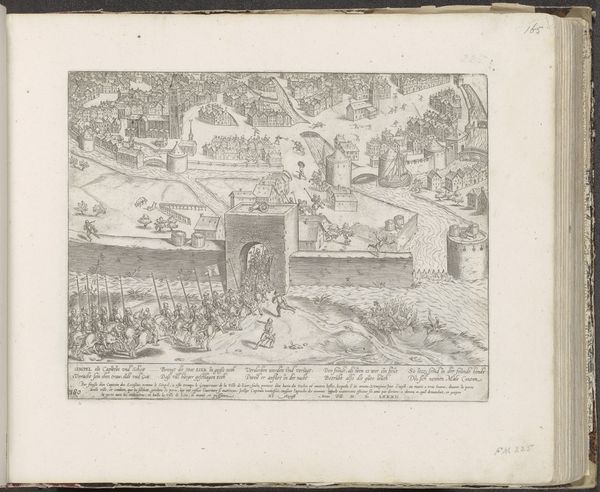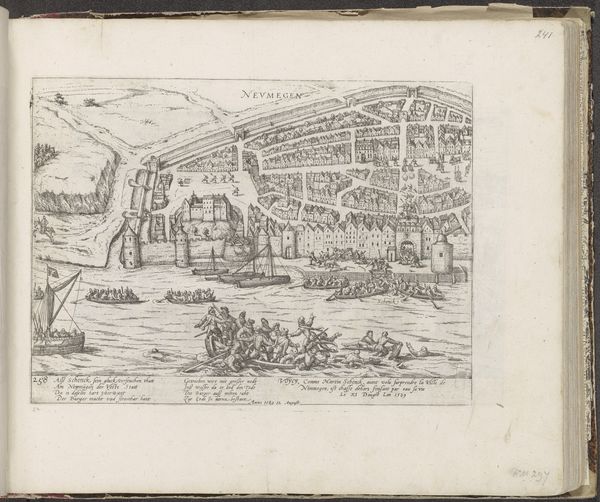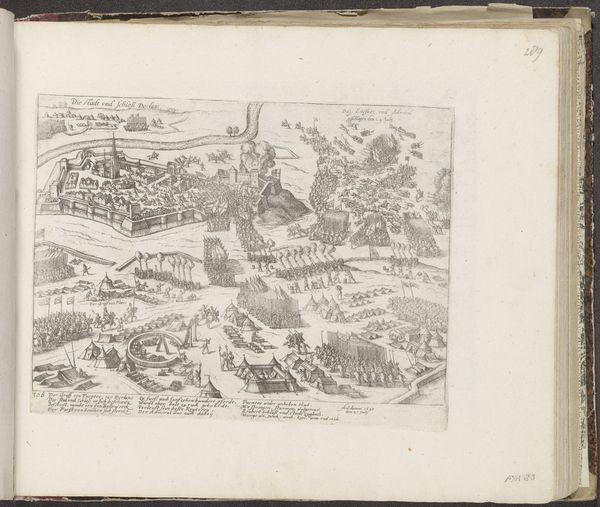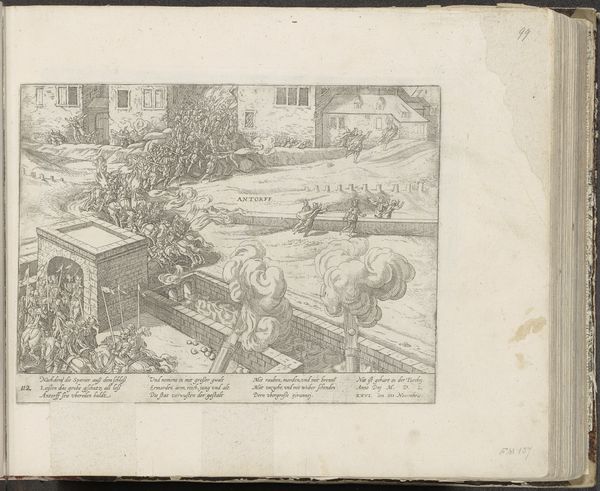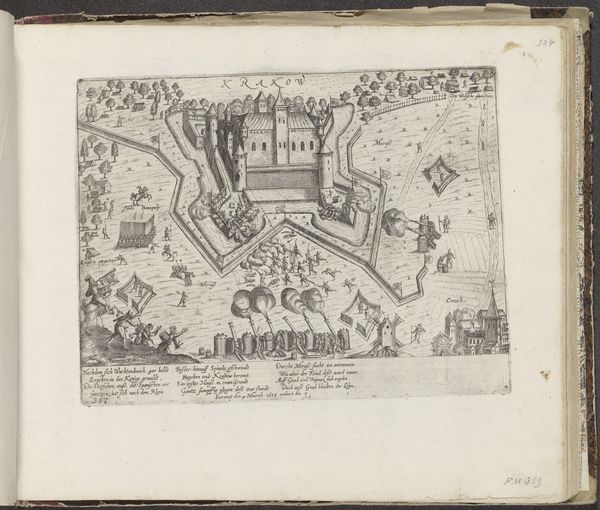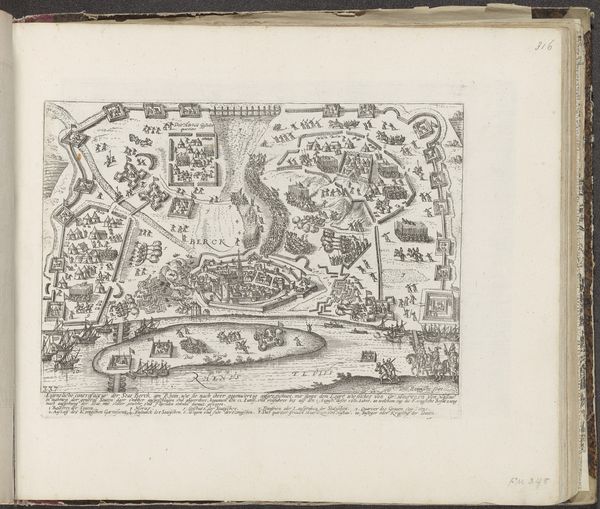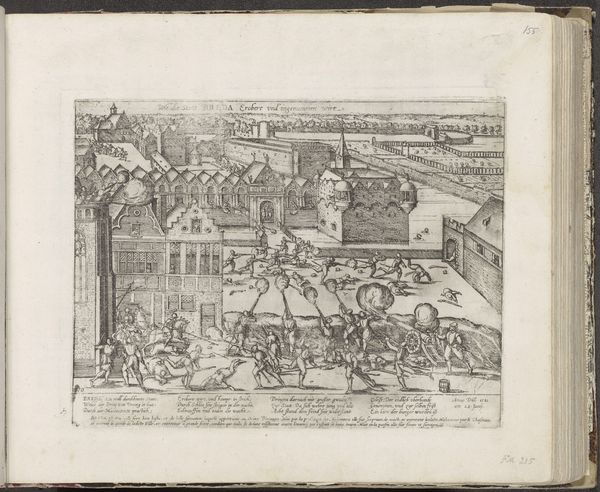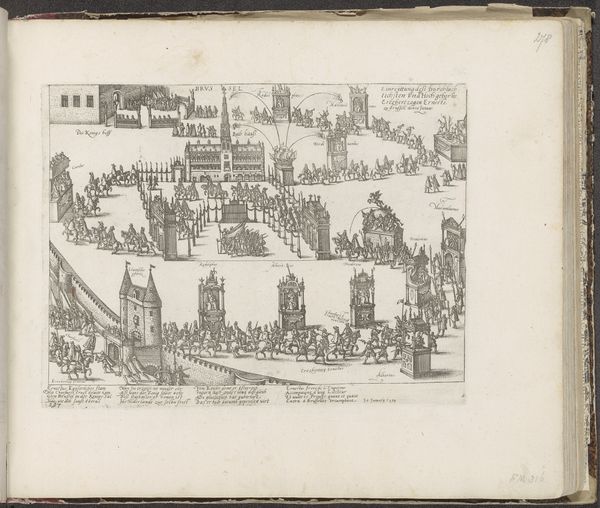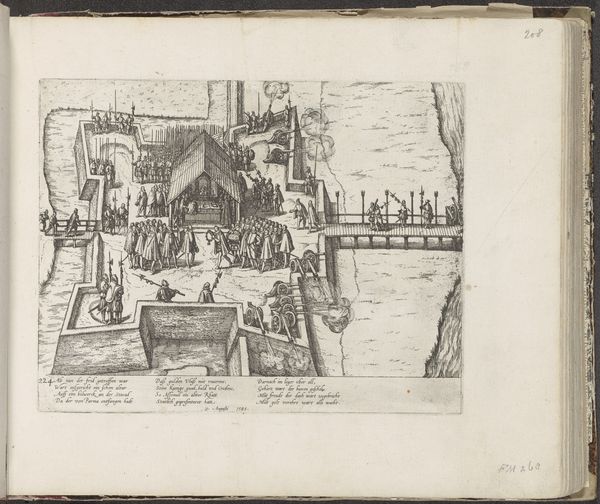
print, engraving
# print
#
cityscape
#
history-painting
#
northern-renaissance
#
engraving
Dimensions: height 215 mm, width 271 mm
Copyright: Rijks Museum: Open Domain
Frans Hogenberg created this print, "The Expulsion of the French from Antwerp," in 1583 using etching, a printmaking process that relies on the corrosive action of acid. The image is first drawn onto a metal plate, then acid is applied to bite into the exposed lines, before the plate is inked and printed. In this work, the acid-biting process captures an image of conflict and resolution. The intricate lines and textures suggest the chaos and violence of battle, but also convey the architectural details of the city. Note the precise rendering of the fortifications, buildings, and figures, achieved through the skilled manipulation of line and tone. Consider that prints like these were essentially the mass media of their day. They played a crucial role in disseminating information and shaping public opinion. Etchings could be produced relatively quickly and cheaply, making them accessible to a wide audience. This one captures a key moment in the struggle for Dutch independence. Appreciate the labor involved, and the social context in which the work was made, and we can understand the full meaning of this image.
Comments
No comments
Be the first to comment and join the conversation on the ultimate creative platform.
